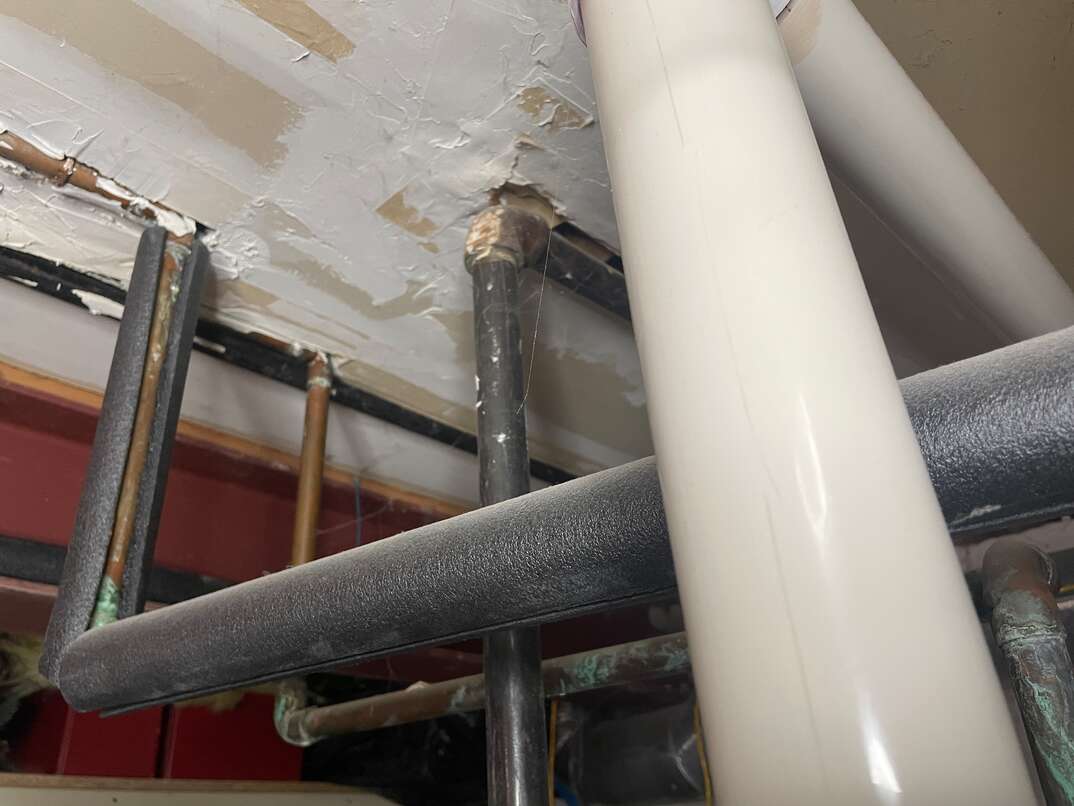How to Insulate Your Pipes

For many homeowners, the official end of summer isn't a Labor Day barbecue — it's a morning shower with a very chilly start. It's normal to blame the temperature setting on your water heater when water is cold, but if the temperature at the source is ideal, you need to look elsewhere for the culprit.
If this scenario plays out every fall when cool weather starts, you might need to look into the insulation (or lack thereof) around your water pipes.
Why Do You Need to Insulate Pipes?
As hot water travels through supply lines in your home, the heat can seep out and leave the water coming out of your faucets lukewarm. Pipes running through exterior walls or floor cavities above unheated crawl spaces are especially vulnerable to heat loss, especially if the water has to travel a long way to reach its destination.
The results are uncomfortable showers and added strain on appliances, including your dishwasher, which has to reheat the water if temperatures drop too low. It may also lead to damaged water lines, leaks and frozen water pipes in the winter. Ice formation in water pipes can cause them to expand and crack, potentially opening your home to moisture damage, including staining, rot and mold.
Pipe insulation can stop condensation from forming on cold water lines and reduce unwanted noise, such as banging and thumping, caused by temperature fluctuations in pipes.
Exposed pipes can cause heat loss, condensation and noise issues anywhere in your house, so it's best to look for and deal with them before they become part of a larger problem. Check hotspots, such as:
Water Heaters
Cold water pipes going into your water heater may condensate and rust, and the output line may experience heat loss, so consider using an insulated pipe wrap on both. Be sure to adhere to safety instructions when insulating pipes around a gas water heater to prevent fires.
Attics
Above your head may not be the first place you look for water pipes, but installing lines in the attic is standard in many locations, especially in slab-foundation homes that have been repaired or remodeled. Pipe wrap insulation in the attic can prevent seasonal problems, including condensation buildup in warm, humid areas during the summer months and frozen pipes during the winter.
Basements
For many homeowners, the basement is a network of water pipes, ductwork and appliances, making it one of the best locations to target when adding pipe insulation wrap to reduce energy costs.
Crawl Spaces
Temperatures in unheated crawl spaces under your home can rapidly drop below freezing in the winter. Condensation is also more likely to form due to a lack of air conditioning, and insulating water supply pipes in crawl spaces can help prevent moisture issues from building up in your home.
- Calling a Plumber? Here Are the 6 Most Common Plumbing Jobs and How Much They Cost
- 6 Ways to Try to Unclog Your Sink Before You Call a Plumber
- What's in My Plumber's Van?
- Here's How Much It Costs to Remodel a Bathroom
- 6 Tips for Hiring a Plumber
What Are the Different Kinds of Pipe Insulation?
Several types of pipe insulation are easy to install and ideal for DIYers, including:
- Foam: A popular choice for homeowners on a budget, foam pipe sleeves are easy to cut to size and slip on exposed piping throughout your house. While they work best at insulating cold water pipes, hot water lines can also benefit from the added protection.
- Rubber: Rubber is resistant to condensation and mold, making it a good choice for piping insulation in humid locations, such as bathrooms and outdoor faucets. It's also highly flexible, allowing you to shape it around bends and joints more easily.
- Fiberglass: Fiberglass insulation can help protect pipes from freezing, thanks to its high R-factor. The batting offers good sound reduction, which can help eliminate odd noises in your walls.
- Foil: Foil pipe wraps are an affordable choice for homeowners looking to cover large areas of pipes, either in attics or basements. The insulated wrap installs quickly and works well at reducing condensation and noise.
How Do You Insulate Water Pipes?
Now that you know the benefits, it's time to learn how to insulate your water pipes and what tools and materials you might need. Most pipe insulators have step-by-step instructions on their packages. This simplifies the process, ensuring most homeowners can complete the job within an afternoon or weekend.
Things You’ll Need
- Tape measure
- Gloves
- Utility knife or scissors
- Securing methods, such as tape or cable ties
- Flashlight
- Packages of insulation
Step-by-Step Guide:
Step 1: Measure the Pipes
Measure the length of your pipes to determine how much insulation you need for full coverage. Remember to check the width of your water lines to ensure the material, such as foam sleeves, will fit around the pipes.
Step 2: Measure and Cut the Insulation
Double-check your pipe measurements, and then measure and cut your chosen insulation to match.
Step 3: Secure Insulation in Place
Once the insulation is sized correctly, fit it around your water pipes and secure it with duct tape or cable ties to ensure it stays snugly in place.
Elocal Editorial Content is for educational and entertainment purposes only. Editorial Content should not be used as a substitute for advice from a licensed professional in your state reviewing your issue. Systems, equipment, issues and circumstances vary. Follow the manufacturer's safety precautions. The opinions, beliefs and viewpoints expressed by the eLocal Editorial Team and other third-party content providers do not necessarily reflect the opinions, beliefs and viewpoints of eLocal or its affiliate companies. Use of the Blog is subject to the
Website Terms and Conditions.The eLocal Editorial Team operates independently of eLocal USA's marketing and sales decisions.



